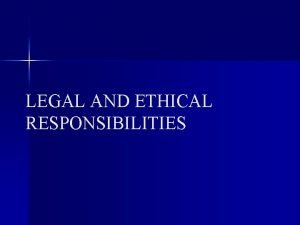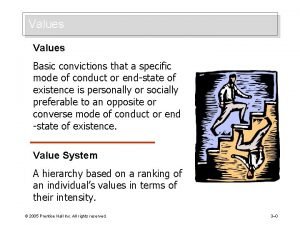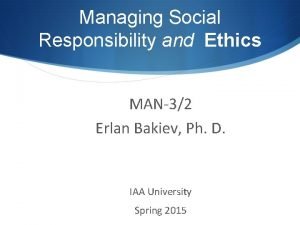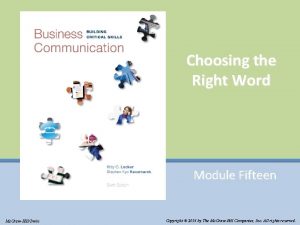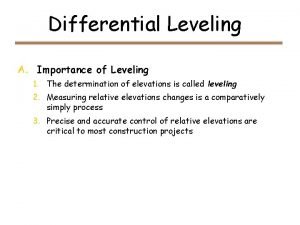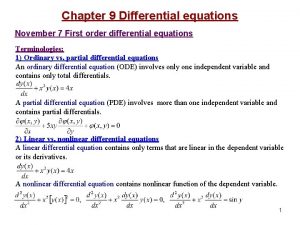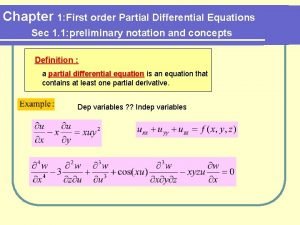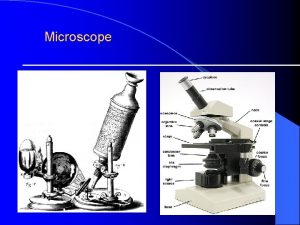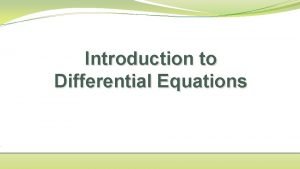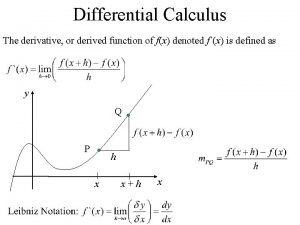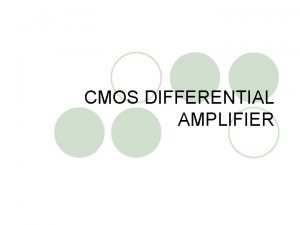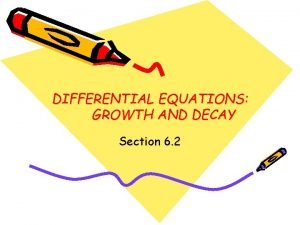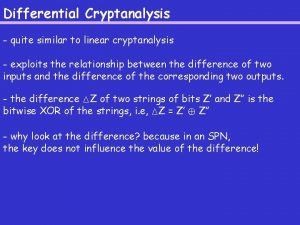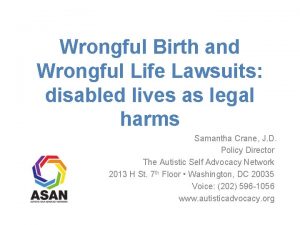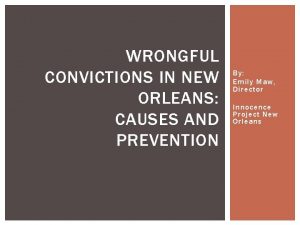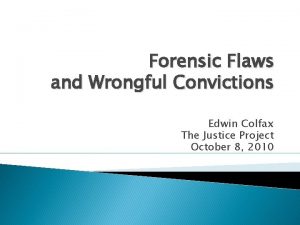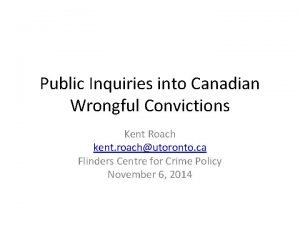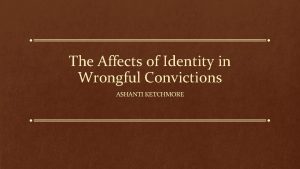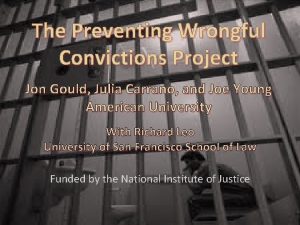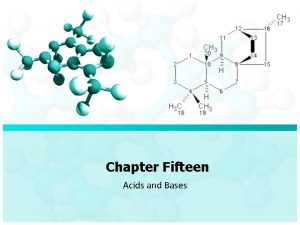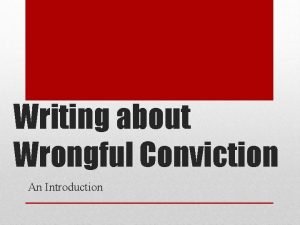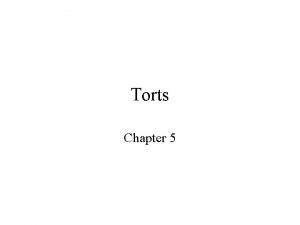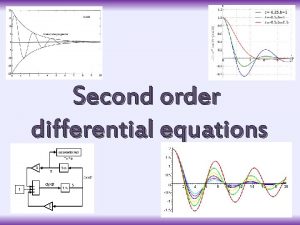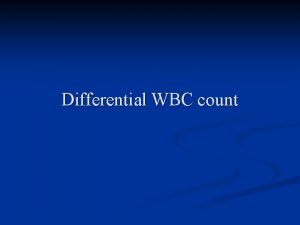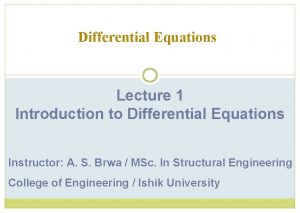Chapter Fifteen Differential Treatment and Wrongful Convictions Introduction































- Slides: 31

Chapter Fifteen Differential Treatment and Wrongful Convictions

Introduction n n Officials in charge of dispensing justice can get carried away in efforts to punish criminals This chapter discusses two main problems in the processing of criminal cases: n n “Differential treatment” “Rush to judgment” Courts and the Criminal Justice System in America, 1 st edition Larry J. Siegel, Frank Schmalleger, John L. Worrall 2 © 2011 Pearson Education, Upper Saddle River, NJ 07458. All Rights Reserved.

Introduction n One case may be treated differently than the next for both legitimate and illegitimate reasons n n Example of a legitimate reason is the desire to speed up the administration of justice An illegitimate reason could be flagrant racial prejudice Courts and the Criminal Justice System in America, 1 st edition Larry J. Siegel, Frank Schmalleger, John L. Worrall 3 © 2011 Pearson Education, Upper Saddle River, NJ 07458. All Rights Reserved.

Introduction n Offense Seriousness n n Differential treatment ensures that it takes longer to hold trials for serious offenses than it does for less serious cases Celebrated Cases n High profile cases include mass murders and graphic killings. n n Most face lengthy, highly-publicized trials Celebrities, star athletes, and politicians n Receive plenty of press attention Courts and the Criminal Justice System in America, 1 st edition Larry J. Siegel, Frank Schmalleger, John L. Worrall 4 © 2011 Pearson Education, Upper Saddle River, NJ 07458. All Rights Reserved.

Introduction n Defendant Characteristics n Most well-known and unfortunate form of differential treatment is based on race or ethnicity n n Discrimination is the unfair treatment of a person or group because of prejudice about race, sex, age, or other distinguishing characteristic Disparity refers to a difference that does not necessarily involve discrimination n e. g. Blacks are sentenced to death more than whites because they commit more capital offenses Courts and the Criminal Justice System in America, 1 st edition Larry J. Siegel, Frank Schmalleger, John L. Worrall 5 © 2011 Pearson Education, Upper Saddle River, NJ 07458. All Rights Reserved.

Introduction n Sam Walker’s continuum of discrimination: n n n Systematic discrimination Institutional discrimination Contextual discrimination Individual acts of discrimination Pure justice n Concluded that contextual discrimination is more likely than either pure justice or systematic discrimination Courts and the Criminal Justice System in America, 1 st edition Larry J. Siegel, Frank Schmalleger, John L. Worrall 6 © 2011 Pearson Education, Upper Saddle River, NJ 07458. All Rights Reserved.

Introduction n The Rush to Judgment n If an elected prosecutor wishes to stay in office, it is often necessary to take a tough stance toward crime n n This can lead to the conviction of an innocent person in the rush to judgment The rush to judgment is about striving to satisfy the demands of a public that wants its government to be tough on crime Courts and the Criminal Justice System in America, 1 st edition Larry J. Siegel, Frank Schmalleger, John L. Worrall 7 © 2011 Pearson Education, Upper Saddle River, NJ 07458. All Rights Reserved.

Differential Treatment: The Wedding Cake n Criminal trials variations occur based on n Seriousness of the offense The “status” of the defendant The wedding cake model originally had three layers: celebrated cases, felonies and misdemeanors Courts and the Criminal Justice System in America, 1 st edition Larry J. Siegel, Frank Schmalleger, John L. Worrall 8 © 2011 Pearson Education, Upper Saddle River, NJ 07458. All Rights Reserved.

Differential Treatment: The Wedding Cake Figure 15 -1 The Criminal Justice Wedding Cake Courts and the Criminal Justice System in America, 1 st edition Larry J. Siegel, Frank Schmalleger, John L. Worrall 9 © 2011 Pearson Education, Upper Saddle River, NJ 07458. All Rights Reserved.

Differential Treatment: The Wedding Cake n Celebrated Cases n Cases involving celebrities or those which receive extensive media coverage n n Defendants can benefit from a full-blown, drawn-out criminal trial that can take months The publicity from celebrated cases can have a negative effect on public perceptions about criminal justice n Walker states policy should not be formed based on celebrated cases Courts and the Criminal Justice System in America, 1 st edition Larry J. Siegel, Frank Schmalleger, John L. Worrall 10 © 2011 Pearson Education, Upper Saddle River, NJ 07458. All Rights Reserved.

Differential Treatment: The Wedding Cake n Felonies n n n Second layer felonies consist of serious crimes that often result in lengthy trials Third layer felonies have many more dismissals, and plea bargains are frequent Three factors determine the layer: n n n Relationship between victim and offender Seriousness of the offense Defendant’s prior record Courts and the Criminal Justice System in America, 1 st edition Larry J. Siegel, Frank Schmalleger, John L. Worrall 11 © 2011 Pearson Education, Upper Saddle River, NJ 07458. All Rights Reserved.

Differential Treatment: The Wedding Cake n Misdemeanors n n n Metaphorical representation of the large number of misdemeanors relative to felonies Cases are dispensed of quickly in brief trials Arguably more representative of the true nature of criminal justice in America, but it is the layer most people never see Courts and the Criminal Justice System in America, 1 st edition Larry J. Siegel, Frank Schmalleger, John L. Worrall 12 © 2011 Pearson Education, Upper Saddle River, NJ 07458. All Rights Reserved.

Differential Treatment: Racial and Ethnic Disparities n n Researchers have examined racial and ethnic disparities at all stages of the criminal process Race refers to distinct physical characteristics n n e. g. the color of one’s skin Ethnicity refers to a shared national, religious, linguistic or cultural heritage Courts and the Criminal Justice System in America, 1 st edition Larry J. Siegel, Frank Schmalleger, John L. Worrall 13 © 2011 Pearson Education, Upper Saddle River, NJ 07458. All Rights Reserved.

Differential Treatment: Racial and Ethnic Disparities n Police-Citizen Encounters n Arrests and traffic stops are the gateway to the criminal process n Arrests mark the point where a person formally enters the criminal process n n Many traffic stops lead to arrest If there is evidence of disparity in either step, then the suspects in the criminal process do not represent the population at large Courts and the Criminal Justice System in America, 1 st edition Larry J. Siegel, Frank Schmalleger, John L. Worrall 14 © 2011 Pearson Education, Upper Saddle River, NJ 07458. All Rights Reserved.

Differential Treatment: Racial and Ethnic Disparities n Arrests n n Minorities are arrested more, as a percentage of their representation in the general population, than whites Some studies have found that a suspect’s race is not predictive of his or her likelihood of arrest n n Rather, evidence factors, crime seriousness and suspect cooperation were important Another analysis found police were more likely to arrest when the victim was white and the suspect was black Courts and the Criminal Justice System in America, 1 st edition Larry J. Siegel, Frank Schmalleger, John L. Worrall 15 © 2011 Pearson Education, Upper Saddle River, NJ 07458. All Rights Reserved.

Differential Treatment: Racial and Ethnic Disparities n Stops n Researchers attempt to determine if an individual’s race or ethnicity influences an officer’s decision to stop him or her n n Results are mixed; rampant discrimination to none at all Age and gender are also important factors It does appear based on the research that race and ethnicity are important some of the time The Lasting Impact of Terry v. Ohio (1968) Courts and the Criminal Justice System in America, 1 st edition Larry J. Siegel, Frank Schmalleger, John L. Worrall 16 © 2011 Pearson Education, Upper Saddle River, NJ 07458. All Rights Reserved.

Differential Treatment: Racial and Ethnic Disparities n The Pretrial Period n There does not appear to be a clear relationship between race/ethnicity, case outcomes and either: n n defense representation bail decisions plea bargaining Racial/ethnic disparities do not seem to be a serious problem Courts and the Criminal Justice System in America, 1 st edition Larry J. Siegel, Frank Schmalleger, John L. Worrall 17 © 2011 Pearson Education, Upper Saddle River, NJ 07458. All Rights Reserved.

Differential Treatment: Racial and Ethnic Disparities n Defense Representation n n Minority offenders tend to be less financially secure than white offenders and may need appointed counsel Bail n There may be racial/ethnic disparities in the bail context n It is not clear that race has a direct effect on either the decision to set bail or sentencing outcomes Courts and the Criminal Justice System in America, 1 st edition Larry J. Siegel, Frank Schmalleger, John L. Worrall 18 © 2011 Pearson Education, Upper Saddle River, NJ 07458. All Rights Reserved.

Differential Treatment: Racial and Ethnic Disparities n Plea Bargaining n n Does race affect plea agreements? Research suggests plea agreements are mostly affected by: n n n Offense seriousness The defendant’s prior record The strength of the evidence Research has found that white receive better plea agreement deals than minorities The Lasting Impact of Chicago v. Morales (1999) Courts and the Criminal Justice System in America, 1 st edition Larry J. Siegel, Frank Schmalleger, John L. Worrall 19 © 2011 Pearson Education, Upper Saddle River, NJ 07458. All Rights Reserved.

Differential Treatment: Racial and Ethnic Disparities n At Trial n Jury Selection n n Evidence that prosecutors will use peremptory challenges to screen out prospective minority jurors from trials of minority defendants Conviction n Blacks are convicted less than whites n Whites comprise a larger percentage of the population Courts and the Criminal Justice System in America, 1 st edition Larry J. Siegel, Frank Schmalleger, John L. Worrall 20 © 2011 Pearson Education, Upper Saddle River, NJ 07458. All Rights Reserved.

Differential Treatment: Racial and Ethnic Disparities n Sentencing n Race/Ethnicity and Sentencing n Evidence suggests that black and Hispanic offenders are more likely to be sent to prison than whites – and for longer periods n n Any discrimination that exists is contextual Drug Sentencing n A number of researchers have found racial/ethnic disparities in sentencing outcomes for drug offenders Courts and the Criminal Justice System in America, 1 st edition Larry J. Siegel, Frank Schmalleger, John L. Worrall 21 © 2011 Pearson Education, Upper Saddle River, NJ 07458. All Rights Reserved.

Differential Treatment: Racial and Ethnic Disparities n Imprisonment and Corrections n Prisons Table 15 -1 Race/Ethnicity Of Male Prisoners Sentenced To State And Federal Correctional Facilities Courts and the Criminal Justice System in America, 1 st edition Larry J. Siegel, Frank Schmalleger, John L. Worrall 22 © 2011 Pearson Education, Upper Saddle River, NJ 07458. All Rights Reserved.

Differential Treatment: Racial and Ethnic Disparities n Jails n While minority representation in the jail population has declined, the overrepresentation of Black inmates is still troubling n n Points to a possibility of racial/ethnic discrimination in bail-setting Community Corrections n There is a clear discrepancy between the percentage of blacks and whites in the population of probationers and parolees Courts and the Criminal Justice System in America, 1 st edition Larry J. Siegel, Frank Schmalleger, John L. Worrall 23 © 2011 Pearson Education, Upper Saddle River, NJ 07458. All Rights Reserved.

Differential Treatment: Racial and Ethnic Disparities Figure 15 -2 Racial/Ethnic Breakdown Of Probationers Figure 15 -3 Racial/Ethnic Breakdown Of Parolees Courts and the Criminal Justice System in America, 1 st edition Larry J. Siegel, Frank Schmalleger, John L. Worrall 24 © 2011 Pearson Education, Upper Saddle River, NJ 07458. All Rights Reserved.

Differential Treatment: Racial and Ethnic Disparities n Capital Punishment n n 1972 Furman v. Georgia decided that the death penalty was unconstitutional The Evidence Before Furman n n Blacks, especially those who killed whites, were more likely than whites to be executed Studies also revealed that the death penalty for rape was largely used for punishing blacks who had raped whites Courts and the Criminal Justice System in America, 1 st edition Larry J. Siegel, Frank Schmalleger, John L. Worrall 25 © 2011 Pearson Education, Upper Saddle River, NJ 07458. All Rights Reserved.

Differential Treatment: Racial and Ethnic Disparities n The Evidence After Furman n The death penalty was reinstated in Gregg Studies indicated “racial/ethnic disparities in the charging, sentencing, and imposition of the death penalty after the Furman decision” Testing Racial Discrimination: Mc. Cleskey v. Kemp n The Court found no merit in the defendant’s contention that race was a factor in his case Courts and the Criminal Justice System in America, 1 st edition Larry J. Siegel, Frank Schmalleger, John L. Worrall 26 © 2011 Pearson Education, Upper Saddle River, NJ 07458. All Rights Reserved.

Differential Treatment: Gender Discrimination n Is Gender Discrimination a Problem? n It appears that female defendants receive more lenient sentences than white males n n Gender effects are most pronounced in the decision whether to imprison – as opposed to in conviction and sentence length decisions Researchers have also looked at interactive effects of race and sex n Steffensmeier conclusions Courts and the Criminal Justice System in America, 1 st edition Larry J. Siegel, Frank Schmalleger, John L. Worrall 27 © 2011 Pearson Education, Upper Saddle River, NJ 07458. All Rights Reserved.

The Rush to Judgment: Wrongful Convictions n The Innocence Movement n n In the 1980’s DNA testing entered the mainstream Innocence Projects n n The mission is to exonerate wrongfully convicted persons through DNA testing Progressive Prosecutors n Some prosecutors have taken a strong position that wrongful convictions must be avoided at all costs Courts and the Criminal Justice System in America, 1 st edition Larry J. Siegel, Frank Schmalleger, John L. Worrall 28 © 2011 Pearson Education, Upper Saddle River, NJ 07458. All Rights Reserved.

The Rush to Judgment: Wrongful Convictions n Exonerations n n Occurs when a person is wrongfully convicted and later declared not guilty Four means of exoneration n n A governor issues a pardon Charges are dismissed by the court Acquittals at a retrial Posthumous Courts and the Criminal Justice System in America, 1 st edition Larry J. Siegel, Frank Schmalleger, John L. Worrall 29 © 2011 Pearson Education, Upper Saddle River, NJ 07458. All Rights Reserved.

The Rush to Judgment: Wrongful Convictions n Exoneration Trends n n The number has increased in recent years The three explanations for this trend are: n n Growing availability of DNA testing The “newsworthy” nature of exoneration cases More resources have been devoted to the problem Crimes for Which Exonerees Were Convicted n Vast majority are murder, rape or sexual assault Courts and the Criminal Justice System in America, 1 st edition Larry J. Siegel, Frank Schmalleger, John L. Worrall 30 © 2011 Pearson Education, Upper Saddle River, NJ 07458. All Rights Reserved.

The Rush to Judgment: Wrongful Convictions n Reasons for Wrongful Convictions n Figure 15 -7 show the five leading causes of exoneration n n Other reasons include government misconduct or inadequate legal representation The Tip of the Iceberg? n n Impossible to accurately estimate the number of wrongful convictions in the U. S. The cases we are familiar with may represent the tip of the iceberg Courts and the Criminal Justice System in America, 1 st edition Larry J. Siegel, Frank Schmalleger, John L. Worrall 31 © 2011 Pearson Education, Upper Saddle River, NJ 07458. All Rights Reserved.
 Failure to give care that is normally expected
Failure to give care that is normally expected Basic convictions that a specific mode of conduct
Basic convictions that a specific mode of conduct Ethical issue intensity example
Ethical issue intensity example Fifteen william stafford analysis
Fifteen william stafford analysis One two three four five six to hundred
One two three four five six to hundred Fifteen william stafford
Fifteen william stafford Mathematics john's favourite subject
Mathematics john's favourite subject Dynaway software
Dynaway software Team fifteen mc
Team fifteen mc Team fifteen mc
Team fifteen mc Fifteen executive departments
Fifteen executive departments Fifteen mc
Fifteen mc Definition of differential levelling
Definition of differential levelling Chapter 28 oral diagnosis and treatment planning
Chapter 28 oral diagnosis and treatment planning Chapter 28 oral diagnosis and treatment planning
Chapter 28 oral diagnosis and treatment planning Chapter 1 risk and its treatment
Chapter 1 risk and its treatment First order differential equation chapter 9
First order differential equation chapter 9 Highest order chapter 1
Highest order chapter 1 Difference selective and differential media
Difference selective and differential media Difference selective and differential media
Difference selective and differential media Difference between differential and selective media
Difference between differential and selective media Partial differential equations examples
Partial differential equations examples Differential media vs selective media
Differential media vs selective media Is differential and derivative the same
Is differential and derivative the same Differential amplifier problems
Differential amplifier problems Formation of partial differential equations ppt
Formation of partial differential equations ppt Viable count technique
Viable count technique Equation digital manchester
Equation digital manchester Nonhomogeneous differential equation
Nonhomogeneous differential equation Differential equations and linear algebra strang
Differential equations and linear algebra strang Exponential differential equation
Exponential differential equation Differentiate between linear and differential cryptanalysis
Differentiate between linear and differential cryptanalysis
